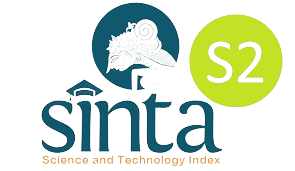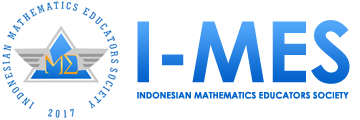Self-efficacy, self-regulation, and math anxiety as predictors of elementary students’ mathematical problem-solving
DOI:
https://doi.org/10.29408/jel.v11i4.30046Keywords:
math anxiety, problem-solving, self-efficacy, self-regulationAbstract
Mathematical problem-solving is a core competency in primary education, yet how self-efficacy, self-regulation, and mathematics anxiety jointly influence performance on tasks of varying cognitive demand remains unclear. This study assessed 180 fifth-grade students from five public elementary schools in Medan City, Indonesia, using three instruments: a 10-item Mathematics Achievement Test (6 LOTS and 4 HOTS items), a 20-item Self-Efficacy and Self-Regulation Scale (10 items per subscale), and the 9-item Modified Abbreviated Math Anxiety Scale (mAMAS). Multiple linear regression showed that self-efficacy (βLOTS = 0.279; βHOTS = 0.261) and self-regulation (βLOTS = 0.214; βHOTS = 0.223) significantly predicted performance on both lower- and higher-order thinking tasks (p < 0.001), explaining 63.7% and 55.2% of the variance, respectively. Mathematics anxiety was not a significant predictor (p > 0.23). Findings suggest that fostering students’ confidence and metacognitive strategies is more effective than reducing anxiety for improving mathematical problem-solving across cognitive complexity levels. Educational interventions should prioritize strengthening self-efficacy and self-regulation to support robust mathematical development in upper primary classrooms.
References
Ahmed, W., Minnaert, A., Werf, G., & Kuyper, H. (2012). The role of competence and value beliefs in students' daily emotional experiences: A multilevel test of a transactional model. Learning and Individual Differences, 22(4), 430–436. https://doi.org/10.1016/j.lindif.2012.04.007
Anderson, L. W., & Krathwohl, D. R. (2001). A taxonomy for learning, teaching, and assessing: A revision of Bloom’s taxonomy of educational objectives. Longman.
Bandura, A. (1997). Self-efficacy: The exercise of control (W. H, Ed.). Freeman and Company.
Barroso, C., Ganley, C. M., McGraw, A. L., Geer, E. A., Hart, S. A., & Daucourt, M. C. (2021). A meta-analysis of the relation between math anxiety and math achievement. Psychological Bulletin, 147(2), 134–168. https://doi.org/10.1037/bul0000307
Bloom, B. S. (1956). Taxonomy of educational objectives: The classification of educational goals (B. S. Bloom, Ed.). Cognitive domain. David McKay Company.
Brookhart, S. M. (2010). How to assess higher-order thinking skills in your classroom. ASCD.
Canonigo, A. M. (2024). Mathematical resilience and achievement: Exploring the mediating role of self-efficacy. Journal of Mathematics Education, 15(1), 45–62.
Carey, S., Zaitchik, D., & Bascandziev, I. (2016). Theories of development: In dialog with Jean Piaget. Developmental Review, 38, 36–54. https://doi.org/10.1016/j.dr.2015.07.003
Cheema, J. R., & Kitsantas, A. (2014). Influences of disciplinary classroom climate on high school student self-efficacy and mathematics achievement: A look at gender and racial–ethnic differences. International Journal of Science and Mathematics Education, 12(5), 1261–1279. https://doi.org/10.1007/s10763-013-9454-4
Cleary, T. J., Velardi, B., & Schnaidman, B. (2017). Effects of the Self-Regulation Empowerment Program (SREP) on middle school students' strategic skills, self-efficacy, and mathematics achievement. Journal of School Psychology, 64, 28–42. https://doi.org/10.1016/j.jsp.2017.04.004
Dignath, C., & Büttner, G. (2018). Teachers' direct and indirect promotion of self-regulated learning in primary and secondary school mathematics classes: Insights from video-based classroom observations and teacher interviews. Metacognition and Learning, 13(2), 127–157. https://doi.org/10.1007/s11409-018-9181-x
Dowker, A., Sarkar, A., & Looi, C. Y. (2016). Mathematics anxiety: What have we learned in 60 years? Frontiers in Psychology, 7, Article 508. https://doi.org/10.3389/fpsyg.2016.00508
Efklides, A. (2011). Interactions of metacognition with motivation and affect in self-regulated learning: The MASRL model. Educational Psychologist, 46(1), 6–25. https://doi.org/10.1080/00461520.2011.538645
Eysenck, M. W., Derakshan, N., Santos, R., & Calvo, M. G. (2007). Anxiety and cognitive performance: Attentional control theory. Emotion, 7(2), 336–353. https://doi.org/10.1037/1528-3542.7.2.336
Fitriani, N., Suryadi, D., & Darhim. (2024). The effect of realistic mathematics education on students' mathematical reasoning ability. Journal of Mathematics Education Research, 13(2), 112–128.
Geary, D. C. (2011). Cognitive predictors of achievement growth in mathematics: A 5-year longitudinal study. Developmental Psychology, 47(6), 1539–1552. https://doi.org/10.1037/a0025510
Honicke, T., & Broadbent, J. (2016). The influence of academic self-efficacy on academic performance: A systematic review. Educational Research Review, 17, 63–84. https://doi.org/10.1016/j.edurev.2015.11.002
Hwang, J., Choi, K. M., & Hand, B. (2023). Exploring the relationship between metacognitive monitoring and mathematics achievement: The role of test anxiety. Contemporary Educational Psychology, 72, Article 102138. https://doi.org/10.1016/j.cedpsych.2023.102138
Hwang, S., & Kim, S. (2024). The role of growth mindset in mathematical achievement: Mediating effects of self-regulation. Educational Psychology, 44(3), 234–251.
Lee, J., & Stankov, L. (2018). Non-cognitive predictors of academic achievement: Evidence from TIMSS and PISA. Learning and Individual Differences, 65, 50–64. https://doi.org/10.1016/j.lindif.2018.05.009
Lee, Y., Cho, S., & Park, H. (2025). Neural correlates of mathematics anxiety: An fMRI investigation of elementary students. Journal of Educational Neuroscience, 12(2), 123–134.
Mammarella, I. C., Caviola, S., & Dowker, A. (2019). Mathematics anxiety: What is known and what is still missing. https://doi.org/10.4324/9780429199981
Mullis, I. V. S., Martin, M. O., Foy, P., Kelly, D. L., & Fishbein, B. (2020). TIMSS 2019 international results in mathematics and science. TIMSS & PIRLS International Study Center. https://timssandpirls.bc.edu/timss2019/international-results/
Ndiung, S., Atika, M., & Jediut, M. (2024). Higher order thinking skills in mathematics with project based learning. Jurnal Pendidikan Indonesia, 13(4), 810–817. https://doi.org/10.23887/jpiundiksha.v13i4.79435
OECD. (2019). PISA 2018 results (Volume I): What students know and can do. OECD Publishing. https://doi.org/10.1787/5f07c754-en
OECD. (2021). 21st-century readers: Developing literacy skills in a digital world. OECD Publishing. https://doi.org/10.1787/a83d84cb-en
Panadero, E. (2017). A review of self-regulated learning: Six models and four directions for research. Frontiers in Psychology, 8, Article 422. https://doi.org/10.3389/fpsyg.2017.00422
Pekrun, R. (2006). The control-value theory of achievement emotions: Assumptions, corollaries, and implications for educational research and practice. Educational Psychology Review, 18(4), 315–341. https://doi.org/10.1007/s10648-006-9029-9
Pekrun, R., & Stephens, E. J. (2010). Achievement emotions: A control-value approach. Social and Personality Psychology Compass, 4(4), 238–255. https://doi.org/10.1111/j.1751-9004.2010.00275.x
Polit, D. F., & Beck, C. T. (2006). The content validity index: Are you sure you know what's being reported? Critique and recommendations. Research in Nursing & Health, 29(5), 489–497. https://doi.org/10.1002/nur.20147
Pratama, G. S., & Retnawati, H. (2018). Urgency of higher order thinking skills (HOTS) content analysis in mathematics textbook. Journal of Physics: Conference Series, 1097(1), 012147. https://doi.org/10.1088/1742-6596/1097/1/012147
Pratiwi, D. D., Putra, H. D., & Fitriani, N. (2024). Elementary students’ performance on LOTS and HOTS mathematical tasks. Educational Research Journal, 9(2), 115–130.
Putwain, D. W., Loderer, K., Gallard, D., & Beaumont, J. (2020). School-related subjective well-being promotes subsequent adaptability, achievement, and positive behavioral conduct. British Journal of Educational Psychology, 90(1), 92–108. https://doi.org/10.1111/bjep.12266
Rach, S., & Heinze, A. (2017). The transition from school to university in mathematics: Which influence do school-related variables have? International Journal of Science and Mathematics Education, 15(7), 1343–1363. https://doi.org/10.1007/s10763-016-9744-8
Rahman, A., A, R., A, & Suárez, C. A. H. (2025). Self-efficacy, self-regulation, and math anxiety as predictors of elementary students’ mathematical problem-solving. Jurnal Elemen, 9(1), 1–10.
Rahman, A. A. (2018). Strategi belajar mengajar matematika [Mathematics teaching and learning strategies. Syiah Kuala University Press.
Rahman, A. A., Kristanti, D., Amalia, Y., Syafitri, E., Astuti, D., & Abdullah, D. (2018). Increasing students’ self-efficacy through realistic mathematics education in inclusion classroom. Journal of Physics: Conference Series, 1114(1), 012111. https://doi.org/10.1088/1742-6596/1114/1/012111
Rahman, A. A., Mushlihuddin, R., Refugio, C. N., & Zulnaidi, H. (2024). Problem-based learning innovation through realism and culture: Impact on mathematical problem solving and self-efficacy in primary school students. Al-Jabar: Jurnal Pendidikan Matematika, 15(1), 251–264. https://doi.org/10.24042/ajpm.v15i1.2193
Ramirez, G., Shaw, S. T., & Maloney, E. A. (2018). Math anxiety: Past research, promising interventions, and a new interpretation framework. Educational Psychologist, 53(2), 145–164. https://doi.org/10.1080/00461520.2018.1447384
Richardson, M., Abraham, C., & Bond, R. (2012). Psychological correlates of university students' academic performance: A systematic review and meta-analysis. Psychological Bulletin, 138(2), 353–387. https://doi.org/10.1037/a0026838
Rohmah, I. N., Sulistyo, A., & Widiastuti, N. (2024). The effectiveness of mathematics learning through a realistic mathematics education approach in elementary schools. Cakrawala Pendidikan, 103(2), 85–98.
Santrock, J. W. (2011). Educational psychology (5th ed.). McGraw-Hill.
Schneider, M., & Löffler, C. (2016). The association between quantity-number competencies and mathematics performance in elementary school children. British Journal of Educational Psychology, 86(4), 519–538. https://doi.org/10.1111/bjep.12114
Schukajlow, S., Blomberg, J., Rellensmann, J., & Leopold, C. (2023). The role of strategy-based motivation in mathematical problem solving: The case of learner-generated drawings. Learning and Instruction, 83, Article 101716. https://doi.org/10.1016/j.learninstruc.2022.101716
Schukajlow, S., Leiss, D., Pekrun, R., Blum, W., Müller, M., & Messner, R. (2012). Teaching methods for modelling problems and students' task-specific enjoyment, value, interest and self-efficacy expectations. Educational Studies in Mathematics, 79(2), 215–237. https://doi.org/10.1007/s10649-011-9341-2
Schunk, D. H., & Pajares, F. (2002). The development of academic self-efficacy. In A. Wigfield & J. S. Eccles (Eds.), Development of achievement motivation (pp. 15–31). Academic Press. https://doi.org/10.1016/B978-012750053-9/50003-6
Sintawati, M. (2016). Implementasi problem-based learning dalam pembelajaran matematika di sekolah dasar [Implementation of problem-based learning in mathematics education in elementary schools. Pustaka Pelajar.
Siregar, N. R. (2017). Persepsi siswa pada pelajaran matematika: Studi pendahuluan pada siswa yang menyenangi game [Students' perceptions of mathematics lessons: A preliminary study of students who enjoy games. In Prosiding Temu Ilmiah X Ikatan Psikologi Perkembangan Indonesia (pp. 224–232).
Star, J. R., Carvalho, C., Linn, M., & Kim, R. (2015). Exploring the relationship between teachers' use of patterns of practice and student learning in algebra. Journal for Research in Mathematics Education, 46(4), 477–509.
Suci, D. W., & Purnomo, Y. W. (2016). Pembelajaran matematika berbasis masalah [Problem-based mathematics learning. Pustaka Pelajar.
Tanujaya, B., Prahmana, R. C. I., & Mumu, J. (2024). Mathematics instruction in the digital age: Challenges and opportunities. Journal on Mathematics Education, 15(1), 1–18.
Thien, L. M., Darmawan, I. G. N., & Ong, M. Y. (2015). Affective characteristics and mathematics performance in Indonesia, Malaysia, and Thailand: What can PISA 2012 data tell us? Large-Scale Assessments in Education, 3(1). https://doi.org/10.1186/s40536-015-0013-z
Zhang, J., & Ardasheva, Y. (2019). Sources of college ELL students’ self-efficacy for English-medium academic tasks. TESOL Quarterly, 53(3), 732–757. https://doi.org/10.1002/tesq.514
Zimmerman, B. J. (2000). Attaining self-regulation: A social cognitive perspective. In M. Boekaerts, P. R. Pintrich, & M. Zeidner (Eds.), Handbook of self-regulation (pp. 13–39). Academic Press. https://doi.org/10.1016/B978-012109890-2/50031-7
Zimmerman, B. J., & Schunk, D. H. (2011). Handbook of self-regulation of learning and performance (B. J. Zimmerman & D. H. Schunk, Eds.). Routledge.
Zirk-Sadowski, J., Lamptey, C., Devine, A., Haggard, M., & Szűcs, D. (2014). Young-age gender differences in mathematics mediated by perceived control or uncontrollability. Developmental Science, 17(6), 1039–1049. https://doi.org/10.1111/desc.12126
Downloads
Published
How to Cite
Issue
Section
License
Copyright (c) 2025 Arief Aulia Rahman, Nur ‘Afifah, Ahmad Rahmatika, Cesar Augusto Hernández Suárez

This work is licensed under a Creative Commons Attribution-ShareAlike 4.0 International License.
Authors who publish with the Jurnal Elemen agree to the following terms:
- Authors retain copyright and grant the journal right of first publication with the work simultaneously licensed under Creative Commons Attribution-ShareAlike 4.0 International License (CC BY-SA 4.0).
- Authors are able to enter into separate, additional contractual arrangements for the distribution of the journal's published version of the work (e.g., post it to an institutional repository or publish it in a book), with an acknowledgment of its initial publication in this journal.
- Authors are permitted and encouraged to post their work online (e.g., in institutional repositories or on their website) prior to and during the submission process, as it can lead to productive exchanges, as well as earlier and greater citation of published work.
Jurnal Elemen is licensed under a Creative Commons Attribution-ShareAlike 4.0 International License





